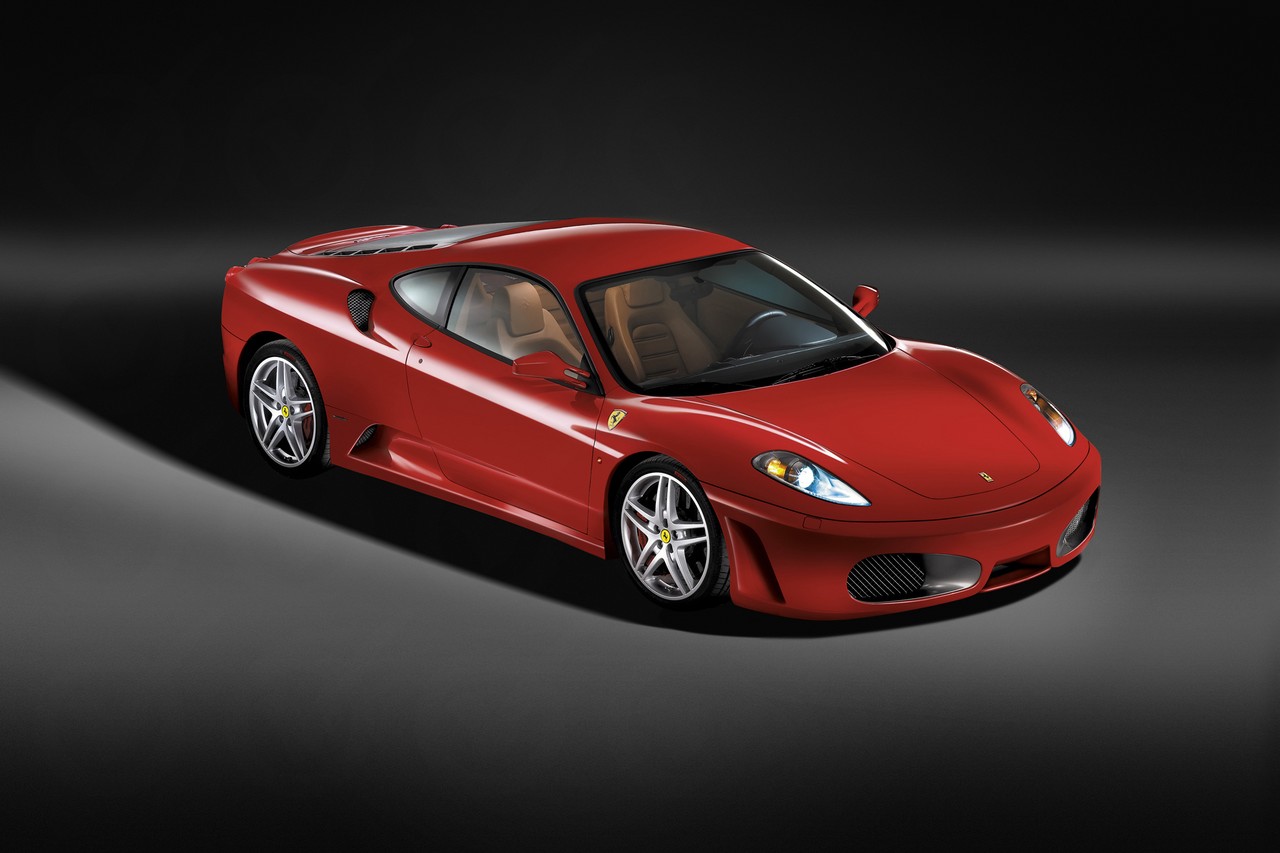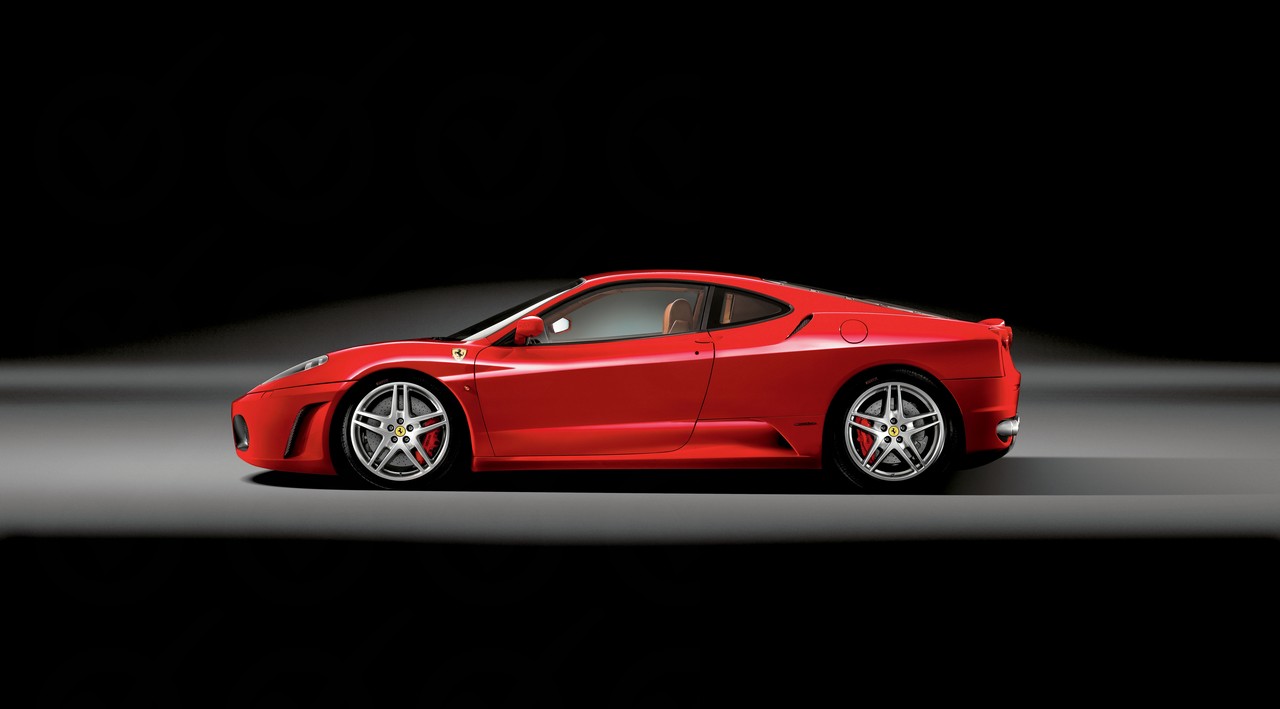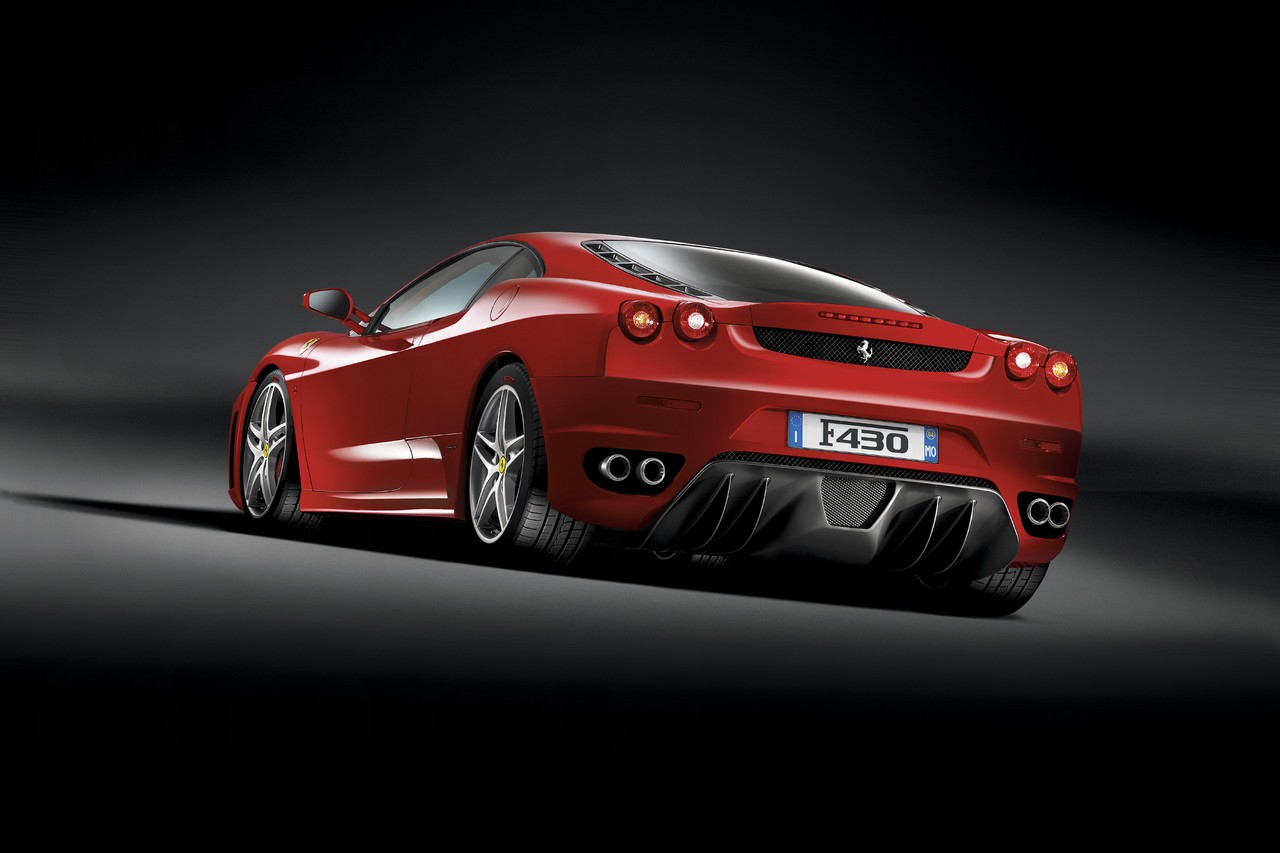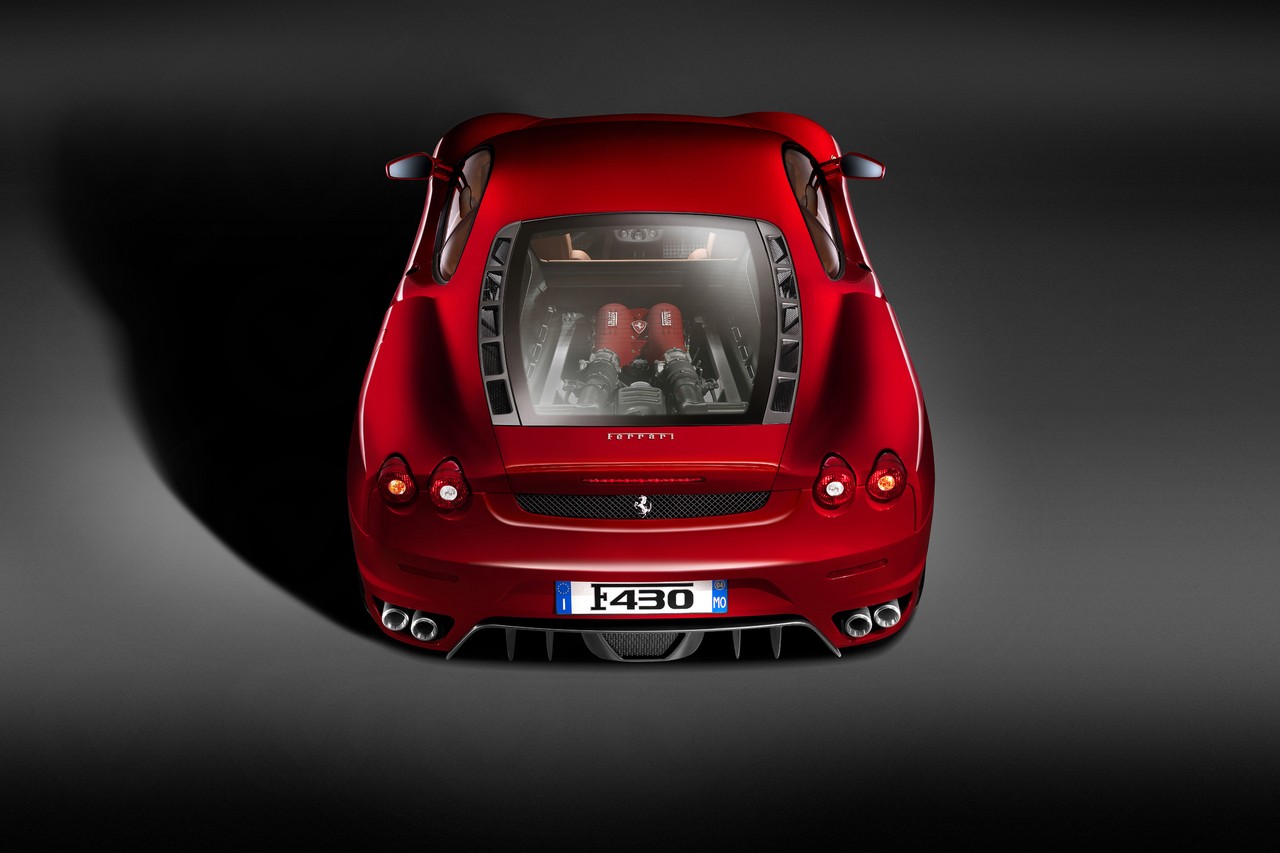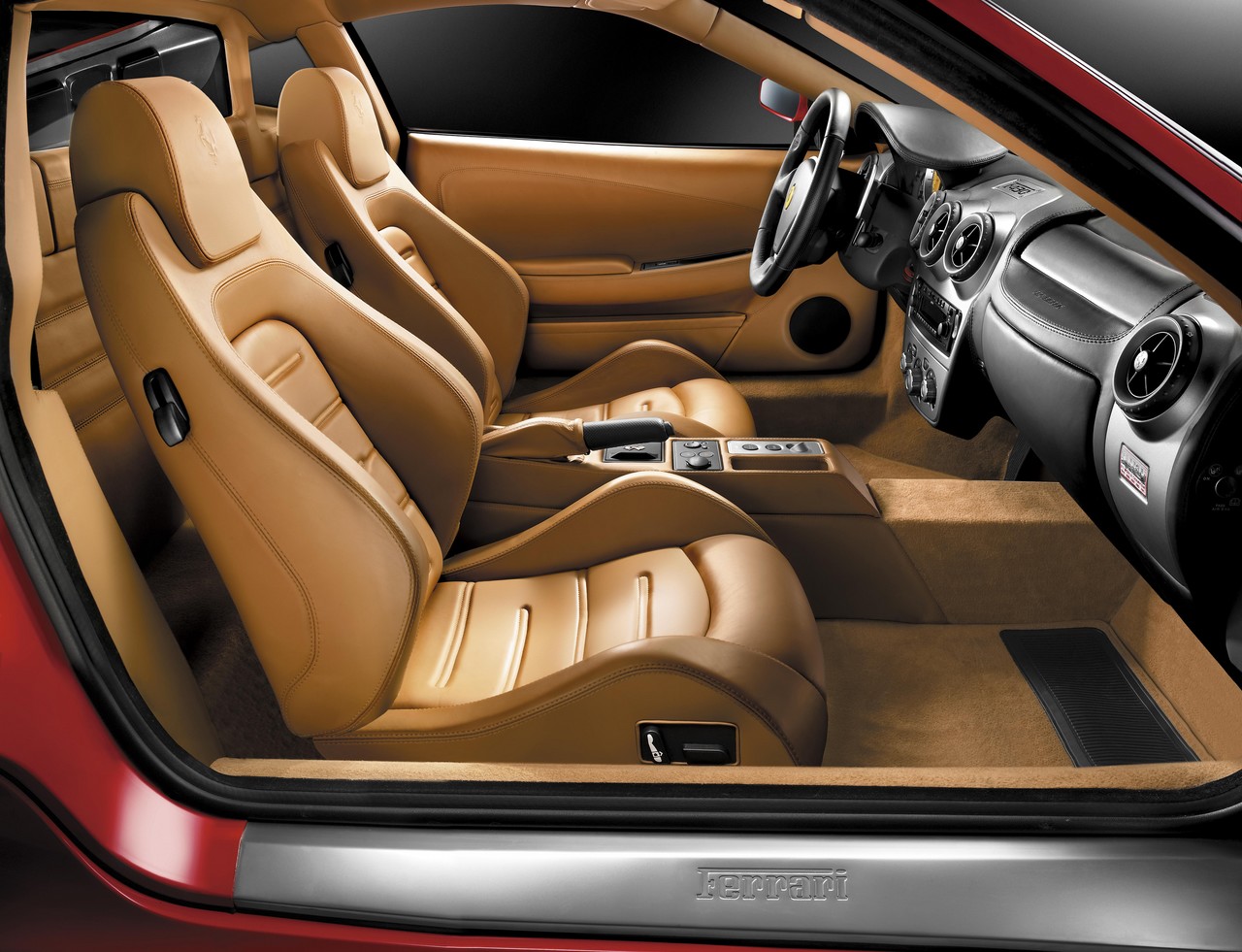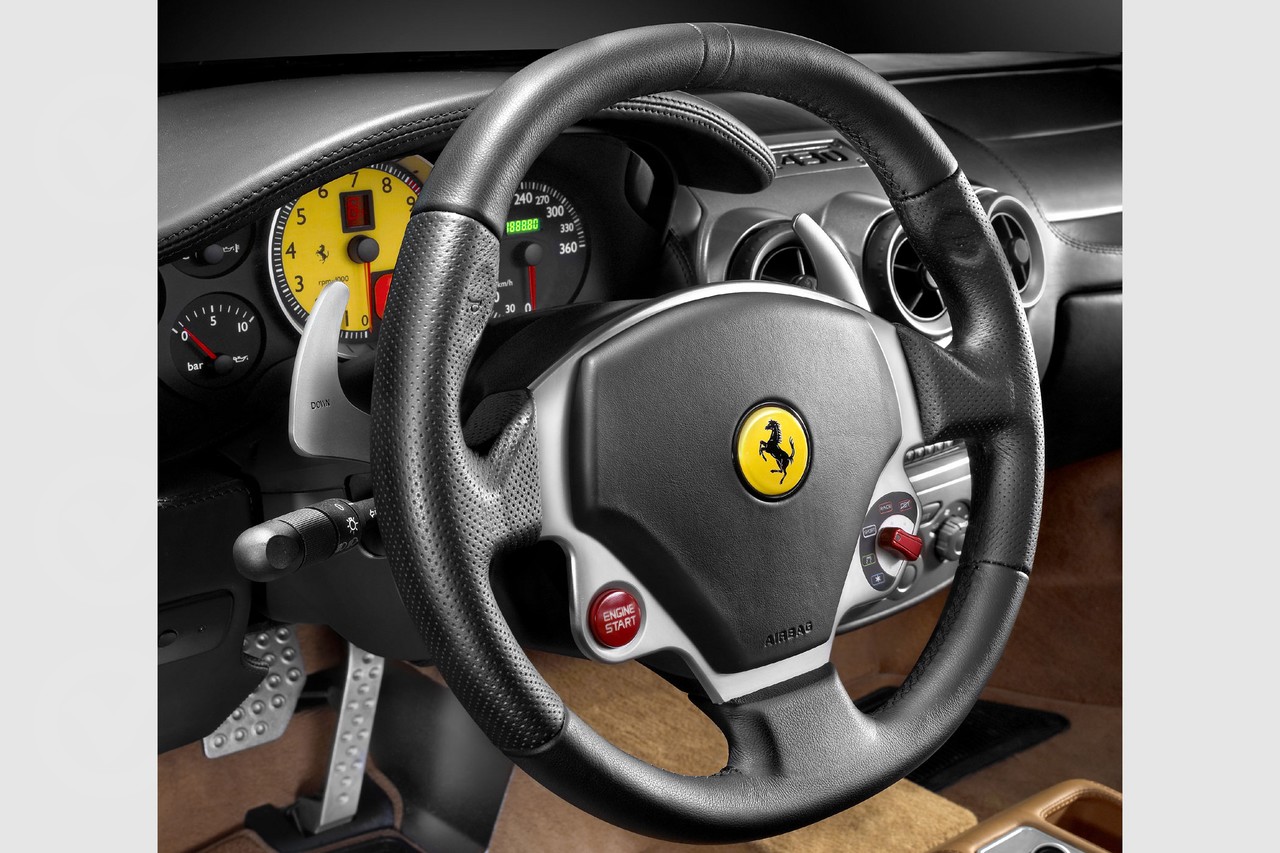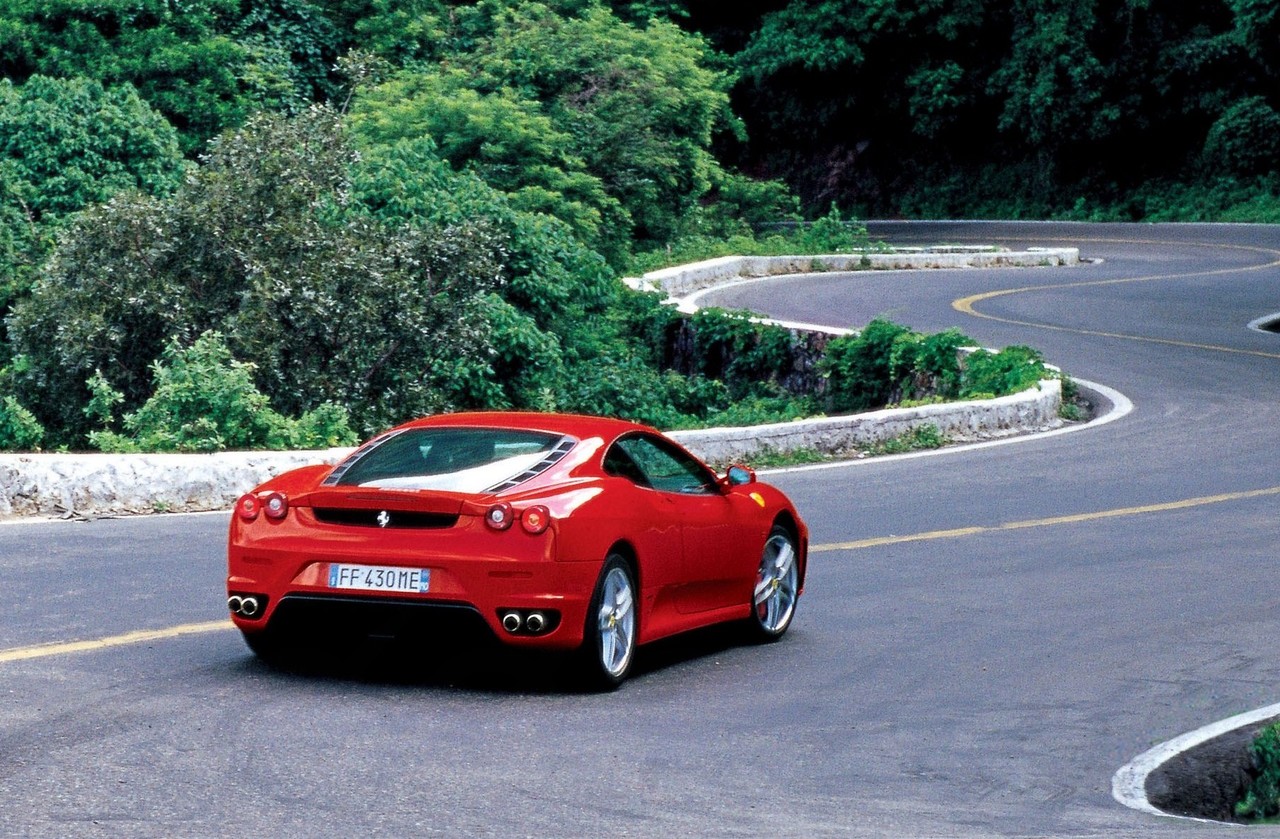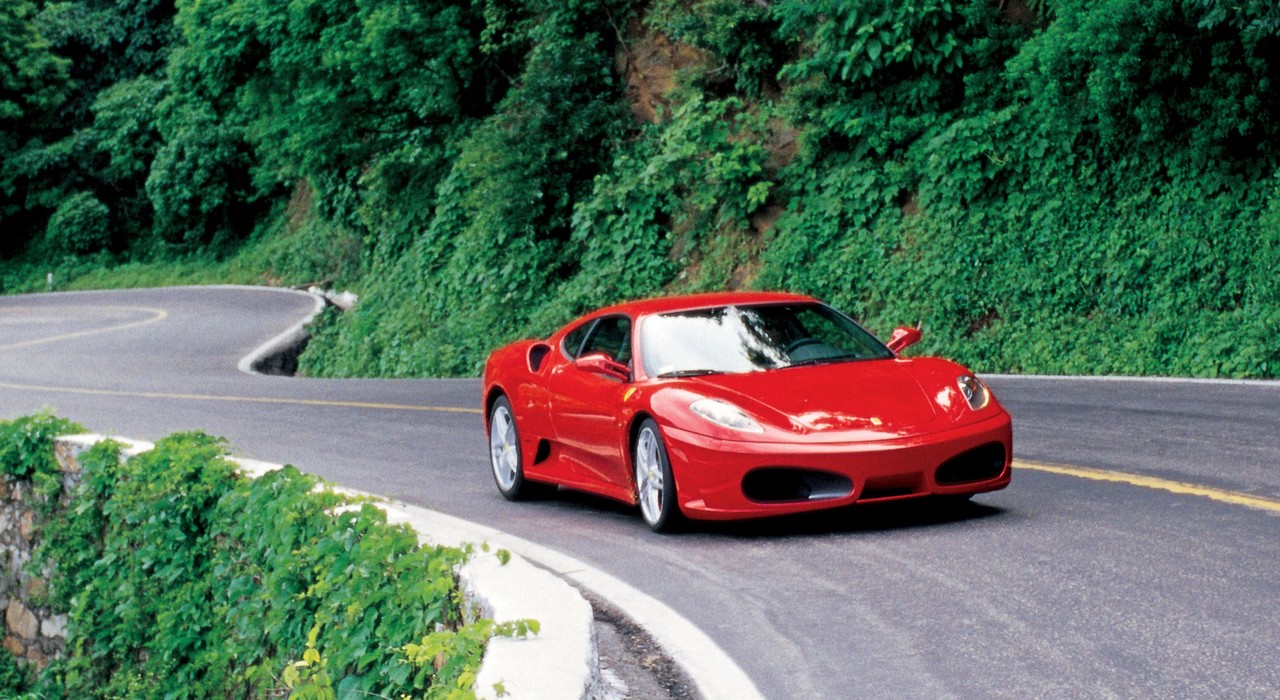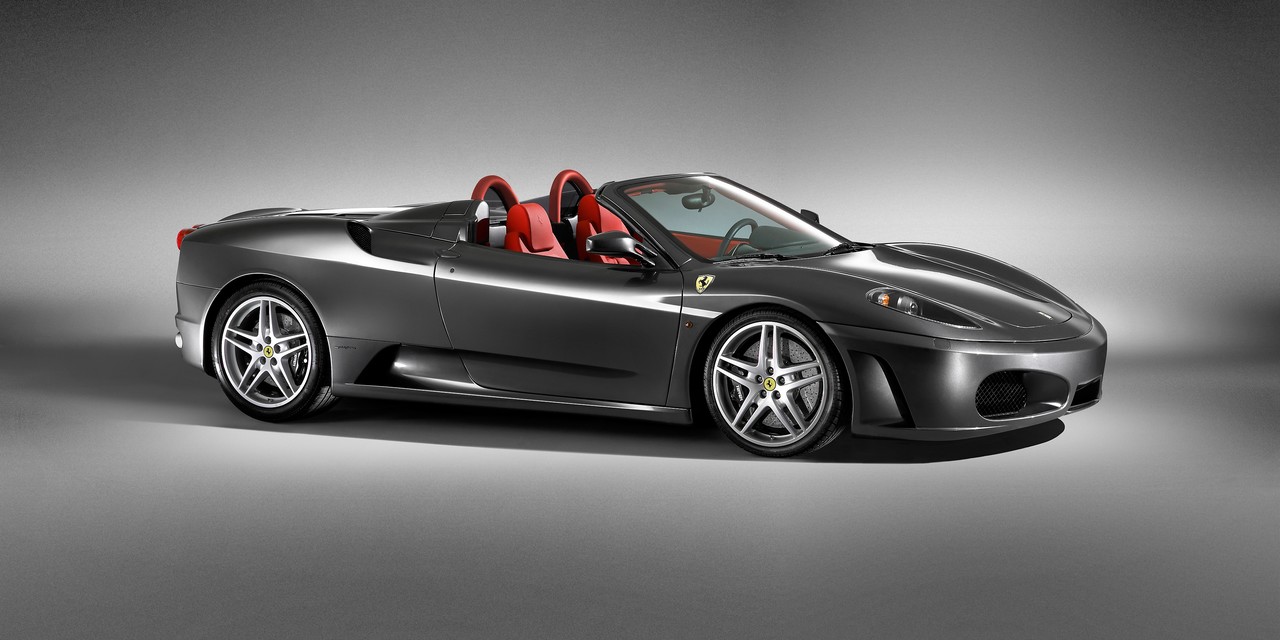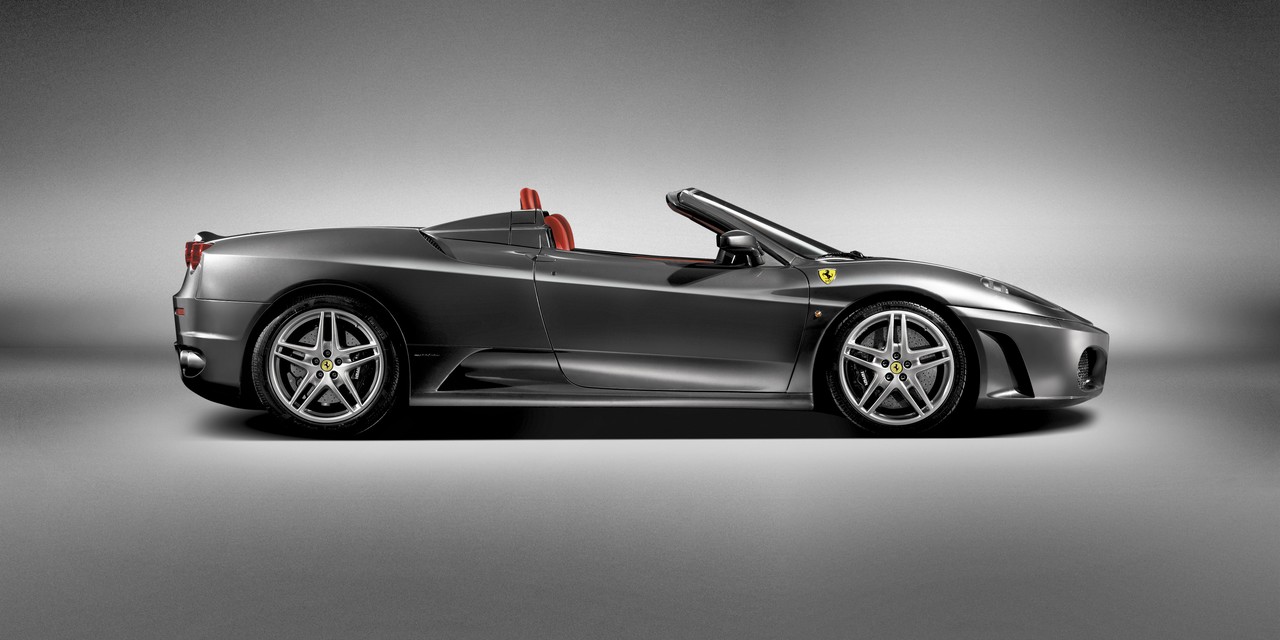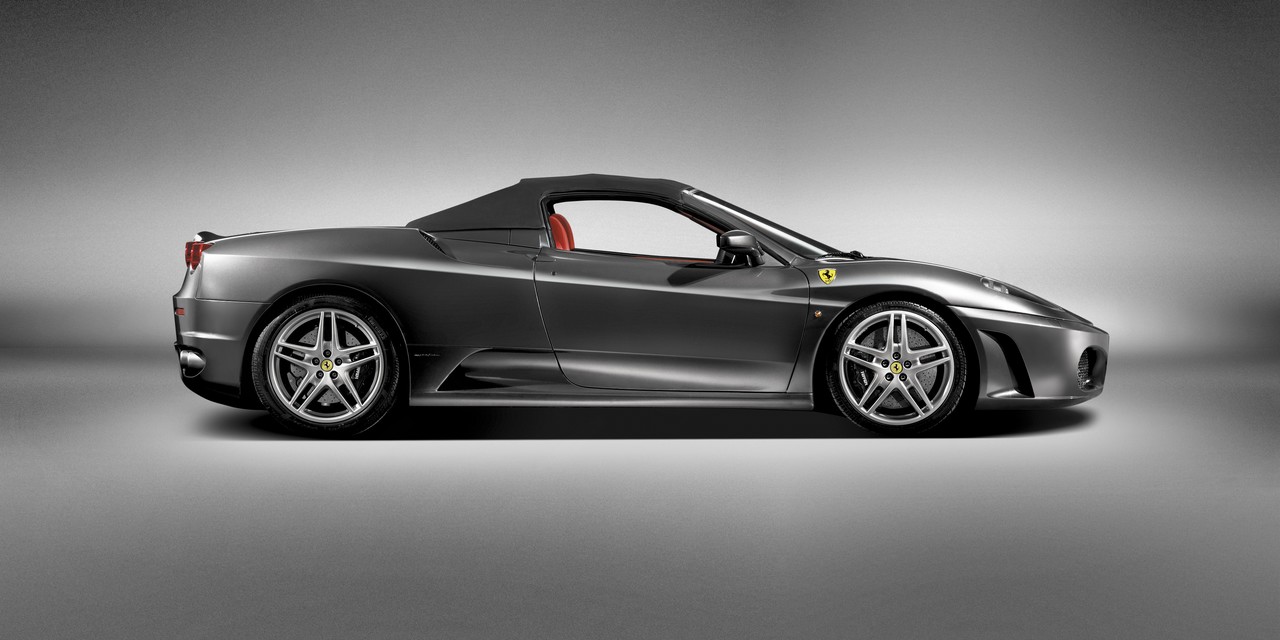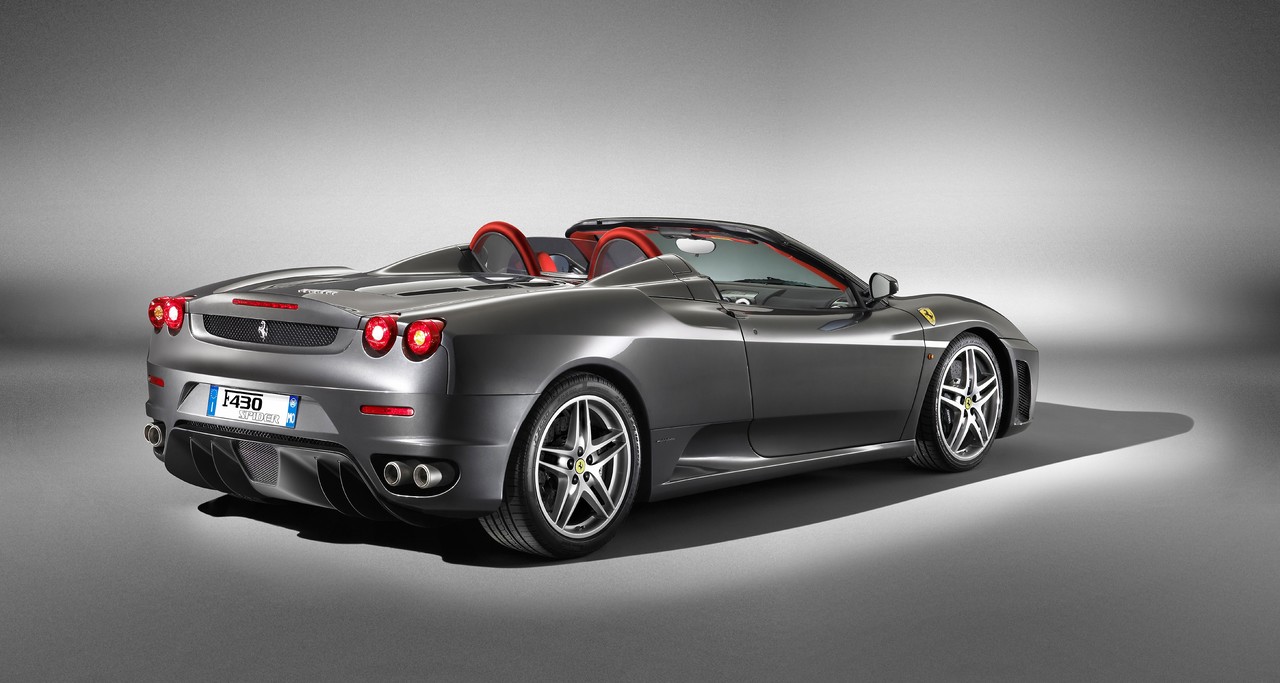
- Outstanding dynamics
- Flexible and powerful V8
- Engaging, rewarding driver experience
- High maintenance costs
- Poor visibility
- Lacks the attractive Pininfarina styling of previous Ferraris
Overview
Released in April 2005, the Ferrari F430 was initially available as coupe, with convertible models (Spider) following in August 2005. Manufactured in Maranello, Italy, the F430 was powered by a 4.3-litre V8 petrol engine that was mated to either a six-speed manual or a semi-automatic ‘F1’ transmission. The F1 transmission had fully automatic and manual modes, was controlled by steering wheel gearshift paddles (i.e. there was no clutch pedal) and could provide 150 ms gear changes.
The new 4.3-litre V8 petrol engine had double overhead camshafts (per cylinder bank), four valves per cylinder, a flat-pane crank, dry-sump lubrication and a compression ratio of 11.3:1. Furthermore, the four-valve cylinder head, valves and intake trumpets were copied directly from Ferrari’s Formula 1 engines. The F430 coupe could accelerate from rest to 100 km/h in 4.0 seconds and had a top speed of 315 km/h.
Compared to the Ferrari 360 , the F430 Coupe was 35 mm longer (at 4512 mm), 1 mm wider (1923 mm) and 20 mm taller (1234 mm); wheelbase length, however, was unchanged at 2600 mm. Significantly, however, the F430 body achieved a 50 per cent increase in downforce. Like its predecessor, the F430 had an aluminium, space-frame chassis and independent, double wishbone suspension front and rear with electronic damper control. The F430 was also fitted with an electronically-controlled ‘E-Diff’ differential which distributed torque between the rear wheels via two seats of friction discs (one for each driveshaft) which were controlled by a hydraulic actuator.
F430 Scuderia and Scuderia 16M
In July 2008, the F430 Scuderia variant was released. Based on the F430 Coupe, the F430 Scuderia was lighter, more powerful and fitted with Ferrari’s ‘F1-SuperFast2 gearbox’ for 60ms gear shifts. In April 2009, the Scuderia 16M was released – the Scuderia 16M was essentially a convertible version of the F430 Scuderia.
| Variant | Years | Engine | Trans. | Peak power | Peak torque | |
|---|---|---|---|---|---|---|
| F430 | Coupe | 2005-09 | 4.3-litre petrol V8 | 6sp man., 6sp semi-auto |
360 kW at 8500 rpm | 465 Nm at 5250 rpm |
| Scuderia | 2008-09 | 4.3-litre petrol V8 | 6sp semi-auto | 375 kW at 8500 rpm | 470 Nm at 5250 rpm | |
| Spider | 2005-09 | 4.3-litre petrol V8 | 6sp man., 6sp semi-auto |
360 kW at 8500 rpm | 465 Nm at 5250 rpm | |
| Scuderia 16M | Spider | 2009 | 4.3-litre petrol V8 | 6sp semi-auto | 375 kW at 8500 rpm | 470 Nm at 5250 rpm |
Safety equipment
Standard safety equipment included dual front airbags, ABS, electronic stability control, traction control and front seatbelt pretensioners. The F430 had 330 mm by 32 mm vented and cross-drilled front and rear disc brakes with four-piston calipers.
The F430 Scuderia and Scuderia 16M omitted the seatbelt pretensioners due to their racing seats. The F430 Scuderia and Scuderia 16M were also fitted with the ‘F1-Trac’ traction control system and an upgraded braking package consisting of 398 mm by 36 mm front and 350 mm by 34 mm rear carbon-ceramic disc brakes with six-piston calipers.
Features
Standard features for the F430 included 19-inch alloy wheels with 225/35 ZR19 front and 285/35 ZR19 rear tyres, climate control air conditioning, leather upholstery, contoured sports seats, cruise control, a multi-function steering wheel, remote central locking, power windows and mirrors, a height and reach adjustable steering wheel, courtesy lamps and an immobiliser. The Spider was also fitted with a power-operated soft-top roof.
Inside, the F430 featured a steering wheel-mounted commutator switch (also known as the ‘manettino’) which enabled the driver to engage various drive settings (‘Ice’, ‘Low Grip’, ‘Sport’, ‘Race’ and ‘CST’).
The F430 Scuderia and Scuderia 16M were fitted with racing seats and while the F430 Scuderia omitted a sound system, the Scuderia 16M was fitted with a six speaker unit.
Related links
